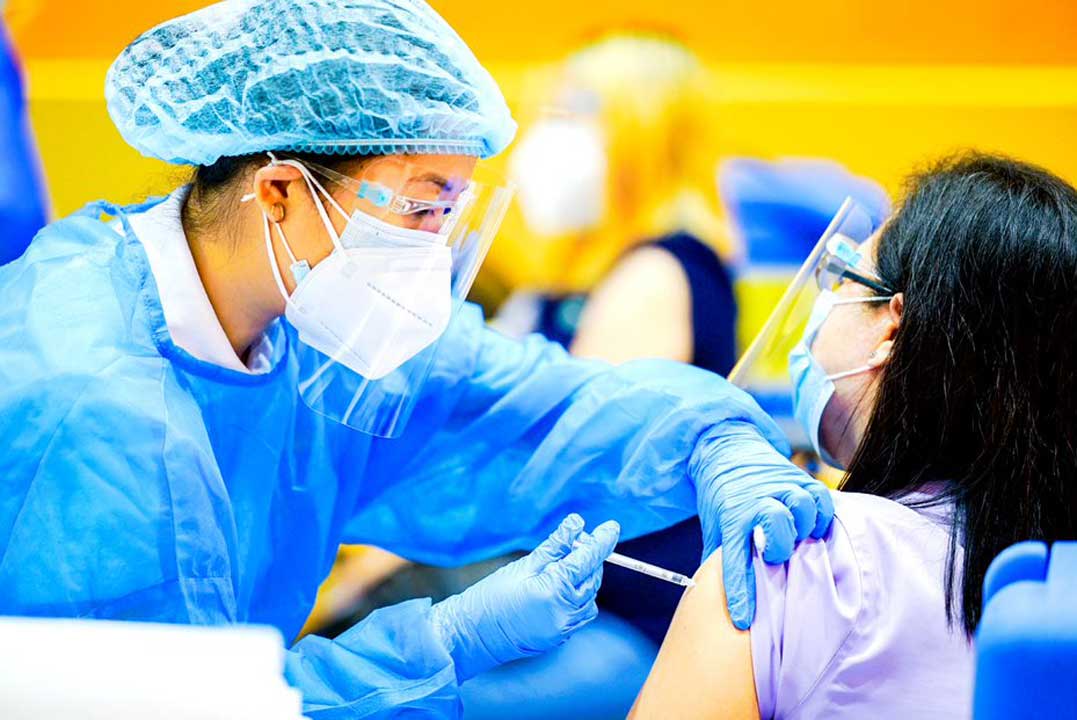COVID positivity rate in the Philippines hits 40%

FOURTY percent of the people tested for coronavirus 2019 (COVID-19) in the Philippines were found to be positive for the virus, the Department of Health (DoH) said in its latest bulletin. The 40% positivity rate is the highest experienced in the country since the COVID19 pandemic started. The health department also reported that there were 21,819 infections on Friday – the sixth-highest one-day tally since the pandemic began.
This brings the total number of infections since the pandemic started to 2.91 million. The total death toll hit 51,871 after 129 more patients died, while the recoveries increased by 973 to 2.78 million in total, the health department said in its regular bulletin.
There are now 77,369 active cases, 2,438 of which are asymptomatic, 70,321 are mild cases, 2,837 are considered moderate, 1,461 are severe, and 312 are critical.
The agency said 99% of the coronavirus cases occurred between Dec. 25 to Jan. 7. The top regions with cases in the past two weeks were Metro Manila with 13,634 infections, Calabarzon with 4,129 and Central Luzon with 2,084.
The DoH said 72 cases had been removed from the tally, with 51 reclassified as recoveries and one as a death. It added that 111 cases previously tagged as recoveries had been relisted as deaths. Ten laboratories failed to submit data.
The agency said 32% of the intensive care units in the Philippines were occupied, while the rate for Metro Manila was 48%.
NUMBER TO INCREASE
Butch Ong of the OCTA Research Group, a private research firm, said in a Friday news briefing that the increase in COVID-19 cases was due to the high mobility during the holiday season.
The number of COVID-19 cases will continue to increase in the next couple of weeks, he added, noting that the current surge may last for a month, basing his judgment on the experience of South Africa with the Omicron variant. “However, we cannot really say for now,” he said.
“Hopefully by February, the situation will be better,” he added.
“It will be very scary for the next few weeks, but we simply have to be patient. We have to wait until this wave passes,” OCTA’s Nicanor Robles Austriaco, Jr. said during the same briefing, “so it’s still important that every single one of our fellowmen still gets vaccinated and boosted because it might help the country as a whole.”
Mr. Austriaco also reiterated his belief that the Omicron variant is the “beginning of the end of the pandemic,” but emphasized that even though it is milder than the Delta variant, “it is still a killer.”
Health Undersecretary Maria Rosario S. Vergeire, in an online news briefing, said that despite its mild symptoms, the Omicron variant is highly contagious. “The higher the [number of] infections, the higher the chance of the virus to replicate, which is their cycle, and they can reproduce.”
“The most important part is there will be higher chances for the virus to mutate,” she added in a mix of English and Filipino. “We need to prevent this high number of infections so that we will not have further mutations which can lead to more fatal outcomes.”
Likewise, Edsel Salvana, a member of the DoH Technical Advisory Group and director of the Institute of Molecular Biology and Biotechnology at the National Institutes of Health at the University of the Philippines Manila, said that the Omicron is a virus, not a vaccine, so it can cause heavy damage to others.
“The risk is not zero. They (vaccinated) can still be infected although it is less severe than (for) somebody who is unvaccinated,” he said in Filipino during the same briefing, “so it is hard to say that it is the beginning of the end.”
OCTA’s Mr. Ong advised the public to follow minimum public health standards, and to get tested immediately when experiencing symptoms, and to isolate to avoid getting infected with the virus.
“If you’re feeling unwell, stay home… If you are unvaccinated, please do consider (vaccination) to protect not only yourself, but our community, and to see the end of the pandemic probably soon.”– Alyssa Nicole O. Tan



